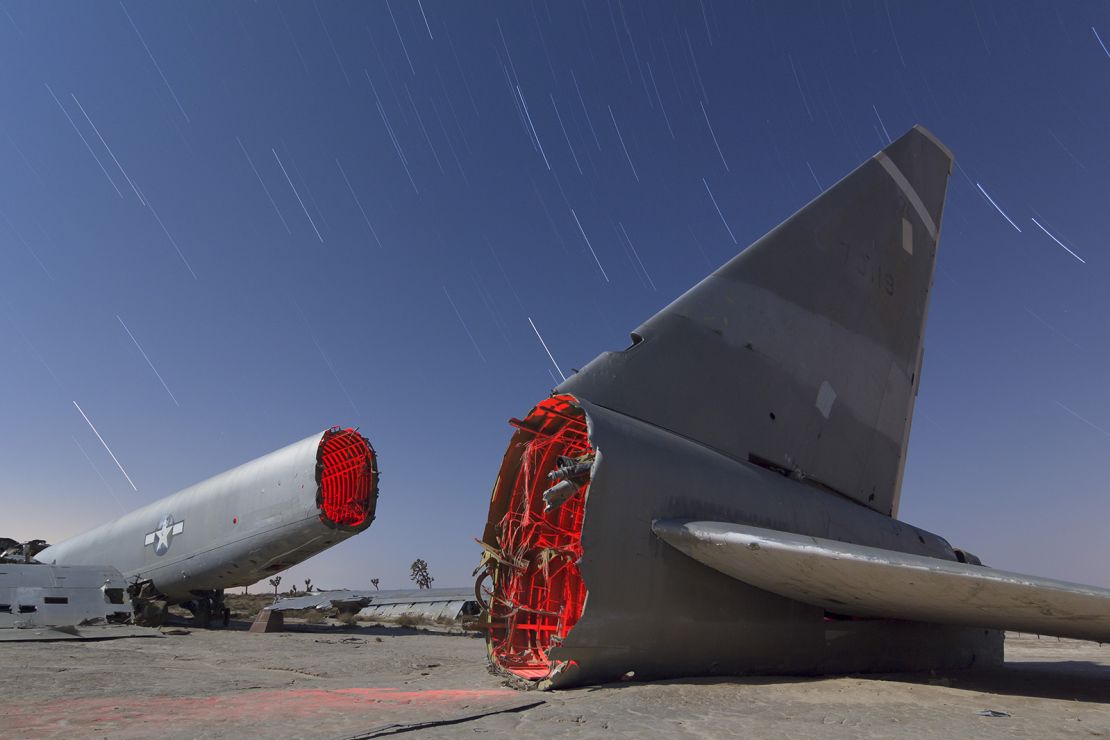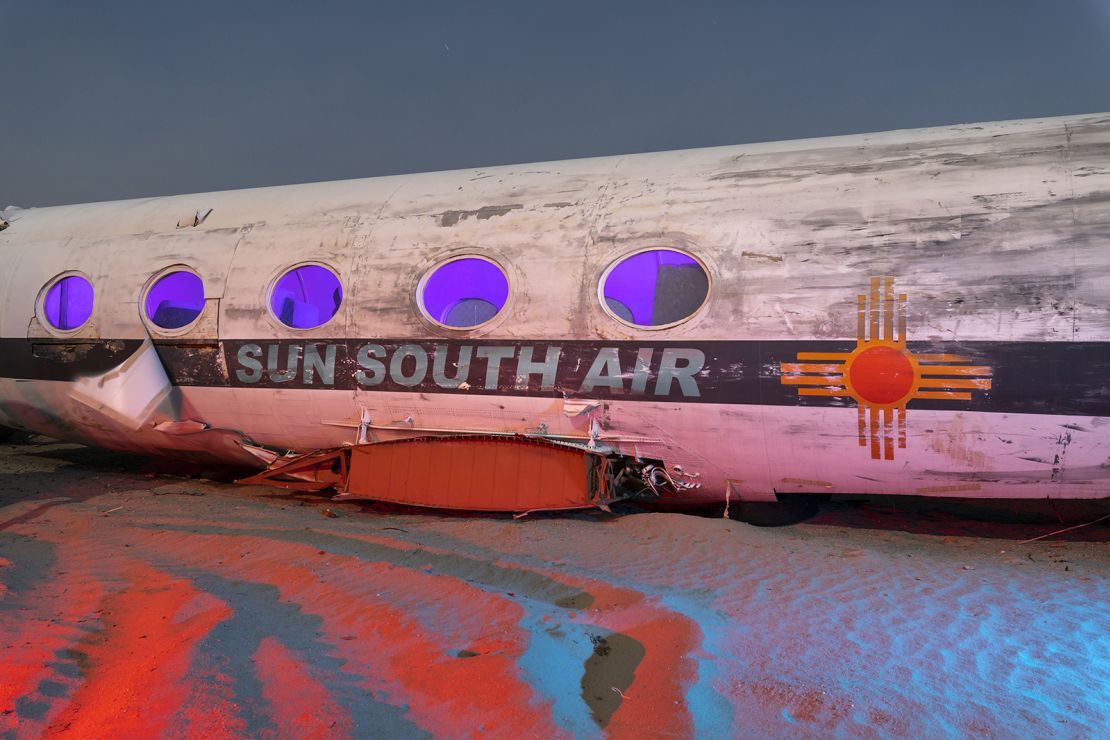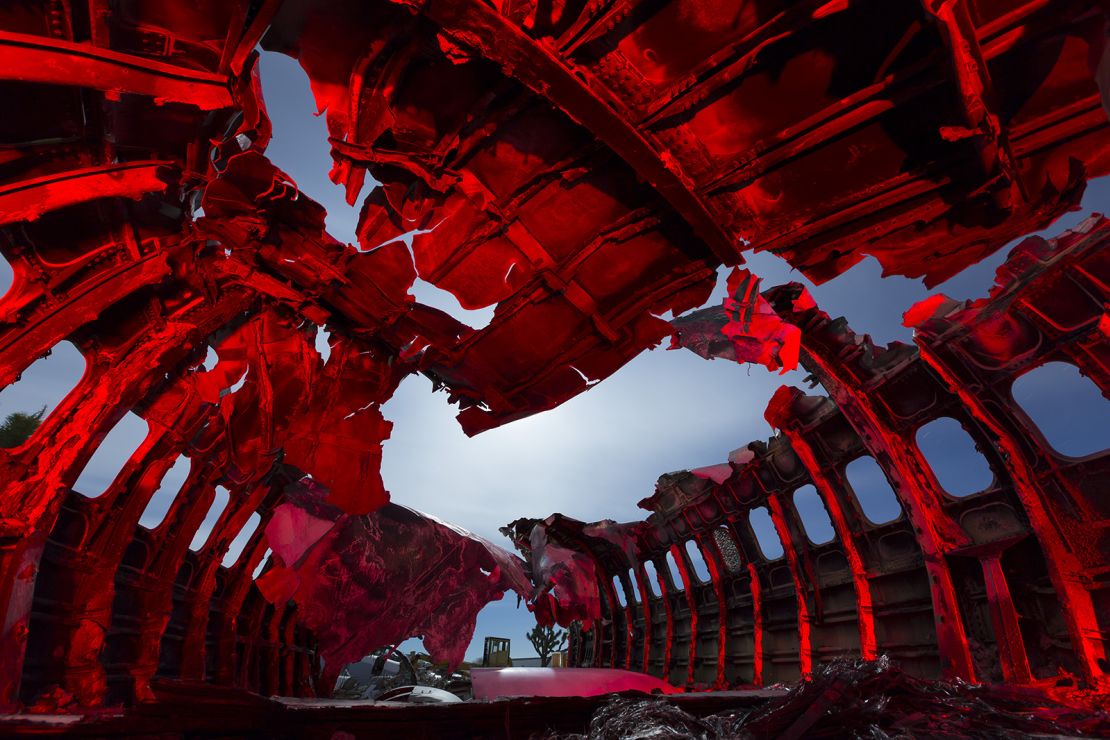Photographer Troy Paiva grew up “obsessed” with airplanes. The son of a flight engineer, he spent his childhood engrossed in aviation books and surrounded by model aircraft.
“It’s part of my makeup,” said the 58-year-old during a phone interview from his home in Silicon Valley. “It’s how I was raised.”
Given his similarly longstanding interest in urban exploration and abandoned spaces, it’s little wonder that Paiva wound up at the eerie plane “graveyards” of the Mojave Desert. For more than a decade, he has been visiting the sites, across California, which include a movie prop business and the private boneyard of military airplane collector.

While he often operates with permission of the owners, the photographer also admits to working in secret – normally under the cover of darkness – to capture the shots.
The resulting images show commercial and military aircraft, from B-52s to Boeing 747s, in varying states of decay. Some have been completely gutted or stripped to reveal electronics and complex engineering. Others still contain interior features familiar to most passengers – padded seats and curtain dividers battered by the desert conditions.
“It’s more interesting if they’re a little bit distressed, and they’re opened up in way you don’t normally see them,” Paiva said. “If you can see parts of airplanes, it’s sometimes more fascinating than seeing them whole.”
Painting with light
Illustrating a dramatic contrast between human progress and the inevitable forces of decline, Paiva has brought together almost 150 of the images into his forthcoming book, “Boneyard: SoCal’s Aircraft Graveyards at Night.” His cinematic photos drip with color, the aircraft’s contours accentuated by fluorescent shades of red, blue, purple, green and yellow.
But while these otherworldly colors may look like the result of clever digital editing, they were in fact achieved using a technique known as “light-painted” photography.

Resting his camera on a tripod, Paiva builds the layers of color with strobes, LED flashlights and other hand-held lighting devices. With exposure oftentimes stretching into minutes, rather than seconds, he’s even able to step into the frame to illuminate certain sections of the picture without appearing in the final shot.
It’s a painstaking process that can take anywhere from a couple of minutes to half an hour per image.
“It’s like making a painting,” he said. “You’ve got to craft it – you’ve got to build it. That’s why it’s totally different from other types of photography.”
Fascination with decay
The theatrical images form just a fraction of Paiva’s output from a career spanning almost three decades. The founder of a long-running photography website, Lost America, he has captured not only junkyards, but also abandoned farms, cars, gas stations and amusement parks across the western United States.
Reporting a recent explosion of interest in so-called “ruins photography,” Paiva traces our fascination with decay back through art history.
“This is not a new thing – it’s something that people have always done,” he said. “But I think it’s been popularized in the last 20 years.

“I think humans are fascinated with their own mortality,” he suggested, by way of explanation, while maintaining that his work is intended to be more “playful” than macabre.
And while Paiva said his work may be read, by some, as a social commentary on American decline, or the nature of the military industrial complex, he is “not trying to make a statement.”
“As an artist, my goal is to put images out there so people can create their own opines and formulate their own feelings about them,” he said, adding: “It’s normal to abandon things – it’s what humans do.”
“Boneyard: SoCal’s Aircraft Graveyards at Night,” published by America Through Time, is available July 29.



















